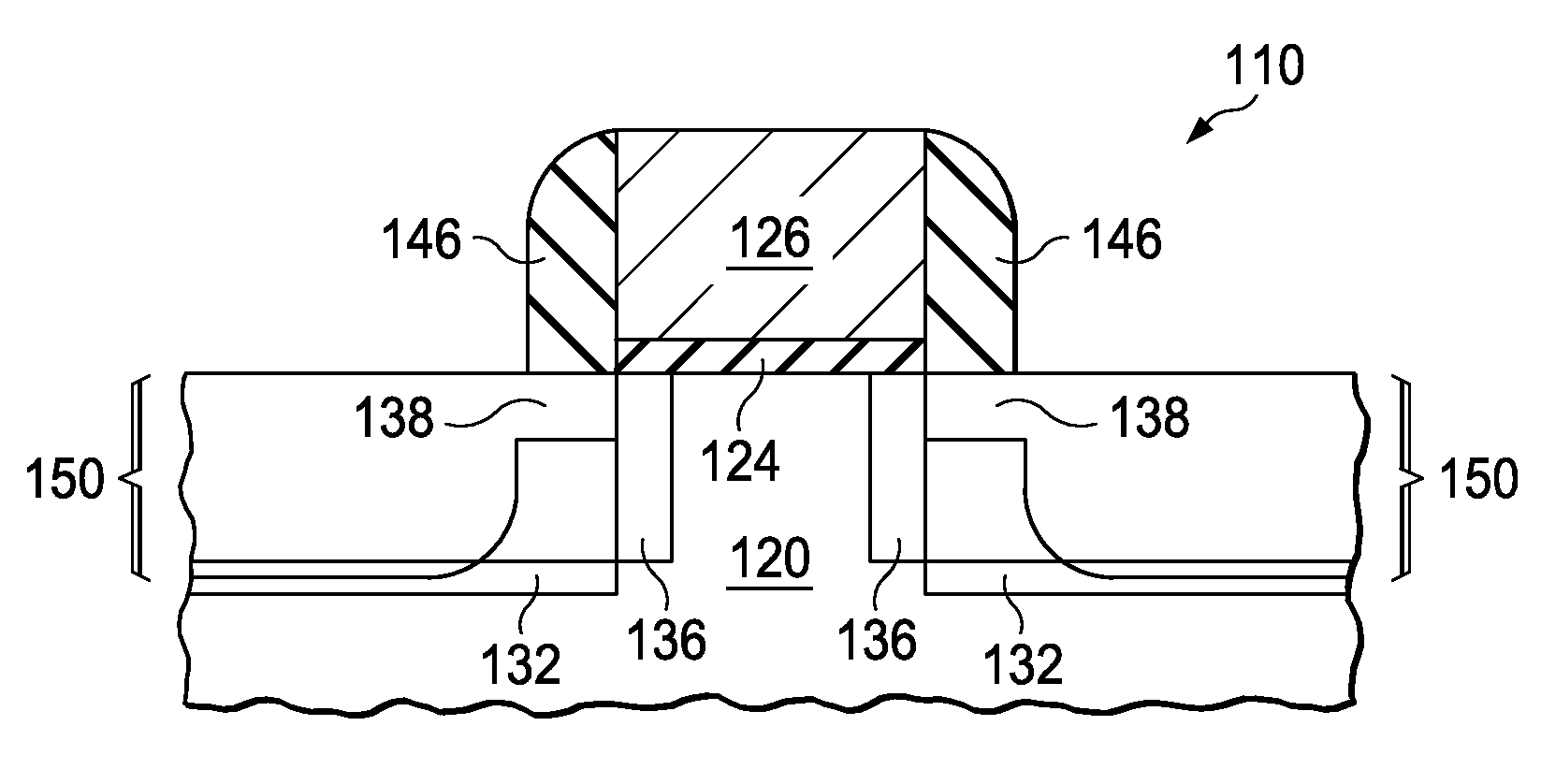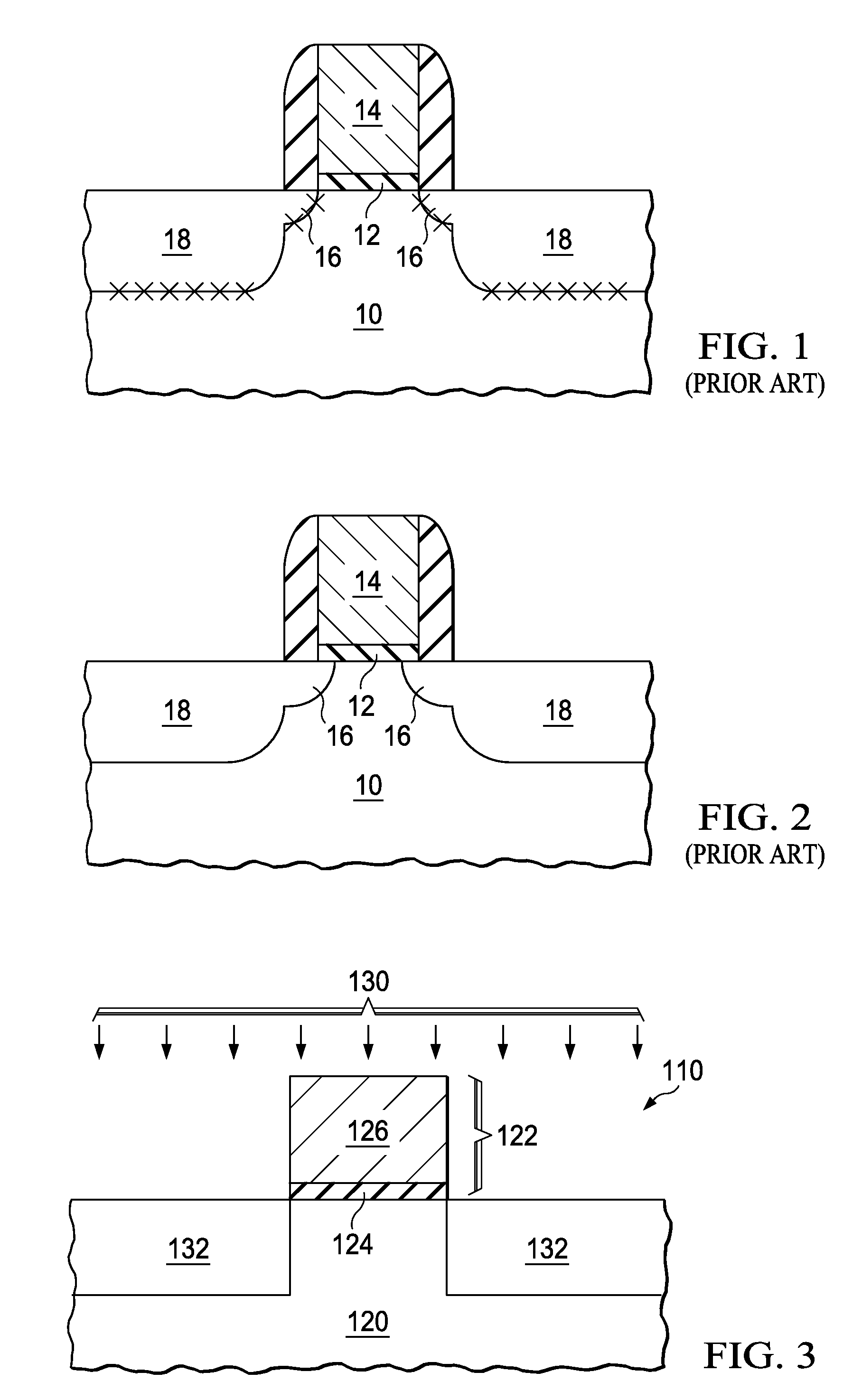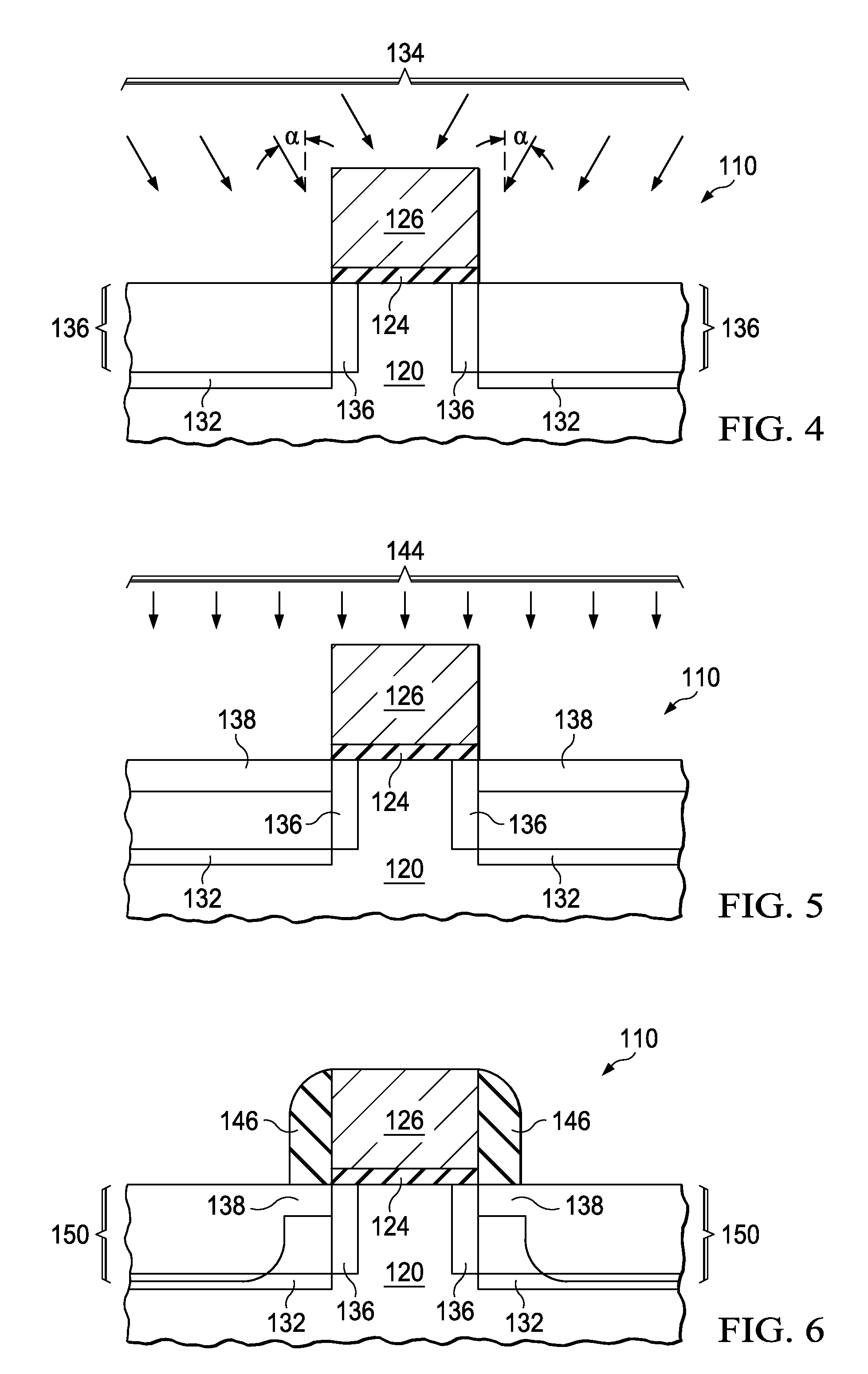Junction Profile Engineering Using Staged Thermal Annealing
a junction profile and staged thermal annealing technology, applied in the direction of semiconductor devices, electrical apparatus, transistors, etc., can solve the problems of implanted diffusion, defect generation, and destruction of lattice structures in the source and drain regions, and achieve reduced diffusion, increased activation rate, and high throughput
- Summary
- Abstract
- Description
- Claims
- Application Information
AI Technical Summary
Benefits of technology
Problems solved by technology
Method used
Image
Examples
Embodiment Construction
[0015]The making and using of the illustrative embodiments are discussed in detail below. It should be appreciated, however, that the illustrative embodiments provide many applicable inventive concepts that can be embodied in a wide variety of specific contexts. The specific embodiments discussed are merely illustrative of specific ways to make and use the invention and do not limit the scope of the invention.
[0016]A novel method for forming and annealing a metal-oxide-semiconductor (MOS) device, which results in an increased activation rate of implanted ions and an improved junction profile in the MOS device is provided. The variations of the embodiments of the present invention are then discussed. Throughout the various views and illustrative embodiments of the present invention, like reference numbers are used to designate like elements.
[0017]FIGS. 3 through 6 illustrate the formation of a metal-oxide-semiconductor (MOS) device, which may be a p-type MOS (PMOS) device or an n-typ...
PUM
| Property | Measurement | Unit |
|---|---|---|
| temperature | aaaaa | aaaaa |
| temperatures | aaaaa | aaaaa |
| peak temperature | aaaaa | aaaaa |
Abstract
Description
Claims
Application Information
 Login to View More
Login to View More - R&D
- Intellectual Property
- Life Sciences
- Materials
- Tech Scout
- Unparalleled Data Quality
- Higher Quality Content
- 60% Fewer Hallucinations
Browse by: Latest US Patents, China's latest patents, Technical Efficacy Thesaurus, Application Domain, Technology Topic, Popular Technical Reports.
© 2025 PatSnap. All rights reserved.Legal|Privacy policy|Modern Slavery Act Transparency Statement|Sitemap|About US| Contact US: help@patsnap.com



